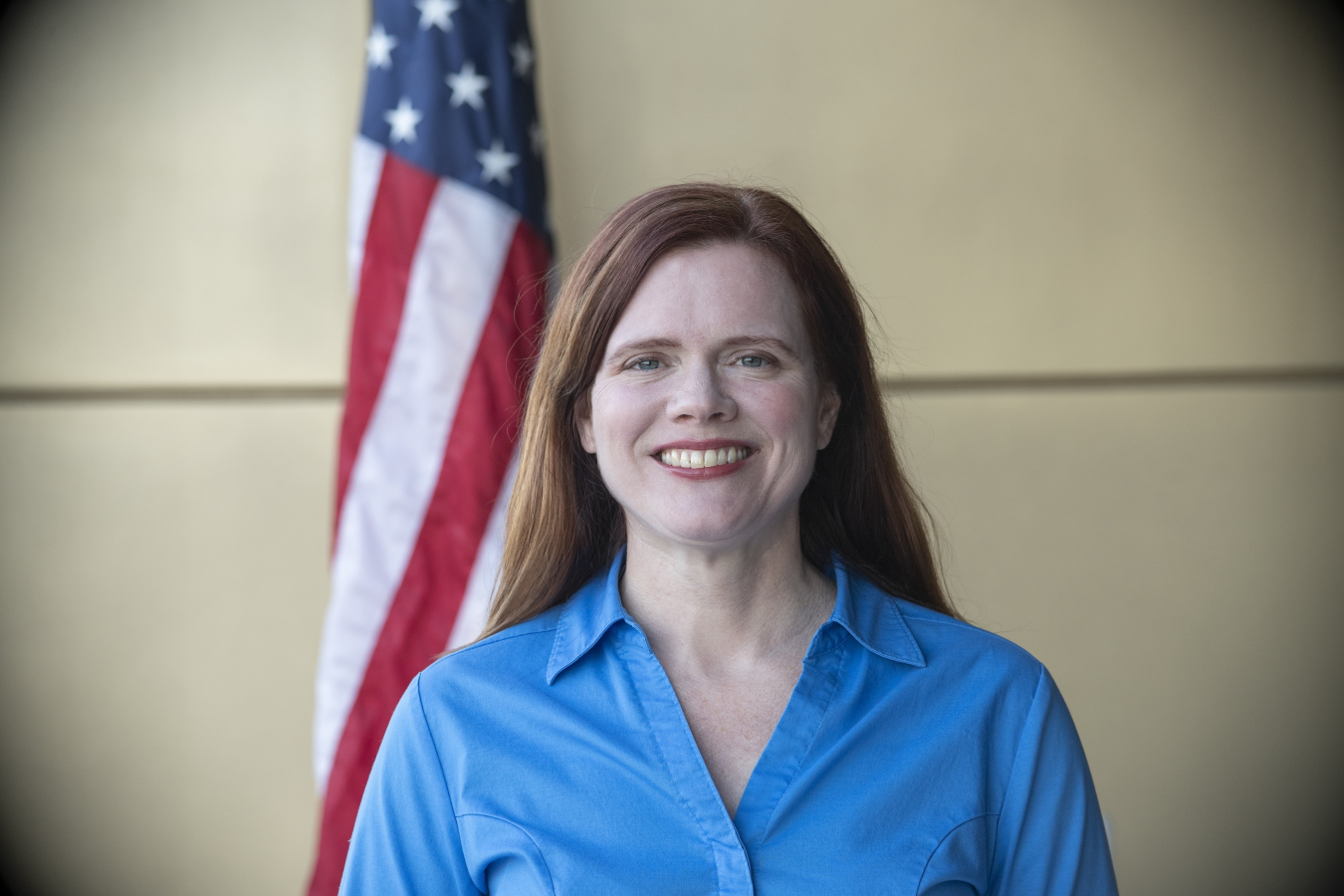New responsibilities include managing successful transfer of sites to LM stewardship
October 17, 2024
Ask Tiffany Drake what she does for a living and watch the smile form on her face. “I often find it amusing when people ask what I do for a living. I try to explain it in basic terms. Once people begin to understand what I really do, they often remark they didn’t realize that it’s something you can do as a career and a job — that it’s a necessary part of protecting the environment at formerly active sites. And I truly believe in LM’s mission of protecting human health and the environment,” she said.
Drake was recently promoted to LM’s site transition program manager. She’ll continue to oversee her current site management duties and responsibilities while coordinating with fellow site managers and cleanup organizations to make sure sites transfer to LM successfully.
Before starting with LM in July 2021, Drake worked at the Missouri Department of Natural Resources for 16 years in a variety of state regulatory roles, performing environmental assessments and investigation, remediation, compliance, and stewardship activities.
Her leadership experience and expertise in program, project, site, and hazardous waste management helped her manage sustainment activities at LM sites, including:
- Resource Conservation and Recovery Act sites.
- Comprehensive Environmental Response, Compensation, and Liability Act sites.
- Formerly Utilized Sites Remedial Action Program sites.
- Decontamination and Decommissioning sites.
She has overseen demolition and climate resilience projects, updated environmental remedy decision documents, participated in industry working groups, and shaped future engineering plans at sites she managed.
Her background has given her perspective about the unique hurdles at LM sites. “One of the bigger challenges we’re seeing is individuals or communities that were part of the initial cleanup are moving on or no longer involved for various reasons,” Drake said. “There’s also been significant turnover within LM, and we’ve lost that institutional knowledge at a lot of our older sites. That presents a challenge because we need individuals local to the site who are aware of the history and what’s going on.”
Without background information or understanding site history, new community members often form views about LM’s work through recent news coverage. “As good stewards of these sites, we really work to share some of the behind-the-scenes information that people who worked on these projects learned at the time that’s not readily available to new community members,” Drake said.
Through all these experiences, she realized LM needs to involve communities more at the beginning of a site’s transition when important decisions are being made. “There’s always been outreach, but now with social media there’s more — there’s wider community interest and we can also use these newer opportunities to cast a wider net in our outreach,” Drake said.
With 30 sites scheduled to transfer to LM in the next 20 years, it’s beneficial to involve communities early.
As the new program manager for site transitions, Drake said her focus is “to ensure the way we are doing things is consistent and programmatic across the board in all regulatory frameworks and addresses the technical needs we have, and that someone in an overarching position is making sure that happens, as well as making sure we are utilizing lessons learned from previous transitions.”
Another consideration she’s addressing is technology and industry advancements. “Assuming what we knew back in 2000 is different now,” she said. “That’s not to say the decision would be different, but you can’t approach a problem in 2024 with a 2000 mindset.”
Drake also plans to look at site-specific approaches and see how to apply them more broadly at other sites. This shared information will help at LM’s future sites and provide guidance to international organizations who are cleaning up sites for beneficial reuse.
But the long game is where the reward is for Drake: “Day by day, it’s hard to see the how the small incremental changes make a difference until you look back over a longer period and can see what you’ve been able to push forward with that daily work to accomplish the goal. If we don’t take those small steps forward every day, we don’t move forward.”
It’s this leadership mindset that earns high praise from LM Director of Site Operations Jay Glascock. “Her hard work and superb achievements have embodied our ‘One Team, One Mission’ philosophy and ensured the continued protection of human health and the environment at our sites,” he said.
Drake’s achievements and forward-thinking approach will undoubtedly shape LM’s future site transitions and preserve the institutional knowledge that’s so important to LM’s continued success.

